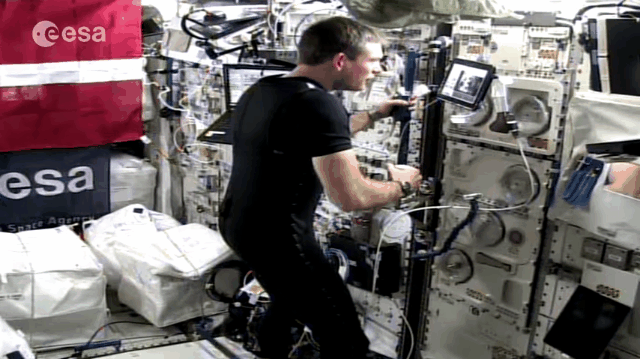
We live in an age of disruption – Industries will be transformed.
This blog (Part 2 of 3) is a quick look at three multi-billion dollar industries (Consumer Electronics, Education, Retail) that are ripe for disruption this decade as a result of Augmented Reality and Virtual Reality.
Consumer Electronics – Displays/Screens
Today, displays (or screens) are everywhere.
Your phone, computer, tablet, 50-inch living room TV, watch, etc. all use electronic displays to present digital information and entertaining content to your eyes, all day long.
Most of these displays are fragile, typically glass, and expensive.
The display market is projected to top $155 billion in 2020, dominated by companies like Apple, Samsung, LG and Sony.
But this is about to change, disruptively.
Companies like Magic Leap (and Microsoft with Hololens) are producing augmented reality platforms that could render screens completely obsolete.
How? Soon, you will be wearing a pair of fashionable glasses (think reading glasses) that “paint”, with light, an image onto the back of your retina (where the optic nerve receives the photons and transmits them to the visual cortex of your brain).
This concept is called Augmented Reality. It’s the mixing of the real world with the computer generated world.
This is very different, and much more powerful than Virtual Reality (like Oculus Rift), which blocks out the real world and only displays a computer generated world.
In Augmented Reality, with the incredible technology being developed by Magic Leap (expect their product to be demonstrated in Beta sometime next year), all of a sudden, everything becomes a “screen”.
You will be able to hold up your hand and check your “virtual email” on your palm.
- You can watch the Sunday football game on your blank living room wall.
- You can see your Google Map projected onto the road in front of you as you drive.
- You can watch movies on the side of buildings from your car.
- You can read a book on your kitchen counter or on the back of your briefcase as you ride the subway home.
And this is just the beginning – these are just a few of the “normal” functions that augmented reality will replace. The new capabilities they will unlock are astounding.
VR/AR is expected to exceed $150 billion market by 2020 as well.
Education
Today’s ‘teacher in front of a classroom” model of education is antiquated. It’s another billion-dollar industry that deserves disruption and reinvention.
Today’s primary education system is forcing kids to memorize information to pass standardized tests. University programs have skyrocketed in cost. And education in general is teaching to the median where half the students are lost, and the other half are bored.
How do we fix education?
We make it fun, taught by the world’s best, on a personalized basis. And we make it free.
With the help of virtual reality, a young student learning about dinosaurs in the Jurassic period won’t have to just read about it in a textbook – they’ll be able to put on a VR headset and literally explore the VR-equivalent of Jurassic Park.
Students studying physics will be able to “step inside” a virtual environment where they build (and destroy) huge structures, fly through the planets, and stand next to a virtual Isaac Newton as he discovers his laws of motion.
Remember the Holodeck from Star Trek? There are a handful of startups that are trying to re-create this exact experience.
Add to this the ability for Artificial Intelligence and VR to work collaboratively, where a virtual version of world’s best history professor delivers a personalized lesson for your child at a pace and in a language best suited just for them.
We will see these technologies dematerialize, demonetize, and democratize access to educational resources that the best and the brightest don’t even have today.
In other words, the software will become freely available to the world, and a child in rural Tanzania will have access to the same resources as a student at Harvard or MIT.
Augmented Reality and Virtual Reality will unleash a creative revolution in education unlike anything we’ve ever seen.
Retail Shopping
In my humble opinion, the retail shopping experience is in need of a massive makeover.
In 2012, total sales in the United States reached $2.5 trillion, and ~$20 trillion around the world.
This is a big market that is ripe for disruption by VR/AR.
- In my mind, here’s one version of the future of retail clothes shopping...
- You won't drive to a store. Ever.
- Eventually, clothing stores will go away, dematerialized and significantly demonetized -- just like Amazon has done to most bookstores.
- Your body is scanned and the data file is private. It's your exact body on that exact day.
- You put on your VR goggles, and appear in a virtual store. Zero time to get there. No traffic, no parking hassles, no walking across the mall to get to the store.
- You enter YOUR personal clothing store. Everything in this store is your exact size. Everything fits. The store has every designer and every design on the planet. Forget "re"tail - this is "me"tail.
- Your friend, who you called a few minutes ago, joins you via their VR headset, and he or she sees everything you see. The experience is social and fun.
- You voice what you're looking for: "Red high-heeled shoes to match my new dress, which has a long black skirt." Suddenly (think the movie Matrix), racks of perfectly fitting products appear like magic.
- When you see an outfit you like, you just point and instantly, an image of your virtual avatar that you see in the mirror is wearing it. No frustration of getting undressed or dressed.
- Your virtual reflection in the virtual mirror moves as you do. It feels and looks perfectly real.
- You wonder aloud how these virtual shoes would look with a particular blouse in your closet at home. No problem: every piece of physical clothing you own in the real world is also available for you to wear in this virtual world. You ask, and instantly you're wearing it.
- When you're done, and you have the exact, perfect clothes you need, you pay the bill and your clothes arrive the next day. (And, if the warehouse or robotic manufacturer is local, perhaps the same day.)
- Oh, and by the way, the cost for an outfit is at least half of what they are today -- no middle man.
Fun times ahead.
WHAT IS ABUNDANCE INSIDER?
This email is a briefing of the week's most compelling, abundance-enabling tech developments, curated by Marissa Brassfield in preparation for Abundance 360. Read more about A360 below.
WANT MORE CONVERSATIONS LIKE THIS?
At Abundance 360, Peter's 360-person executive mastermind, we teach the metatrends, implications and unfair advantages for entrepreneurs enabled by breakthroughs like those featured above. We're looking for CEOs and entrepreneurs who want to change the world. The program is highly selective. Apply now for Abundance360 Summit if you'd like to develop an Abundance Mindset.
Know someone who would benefit from getting Abundance Insider? Send them to this link to sign up.






